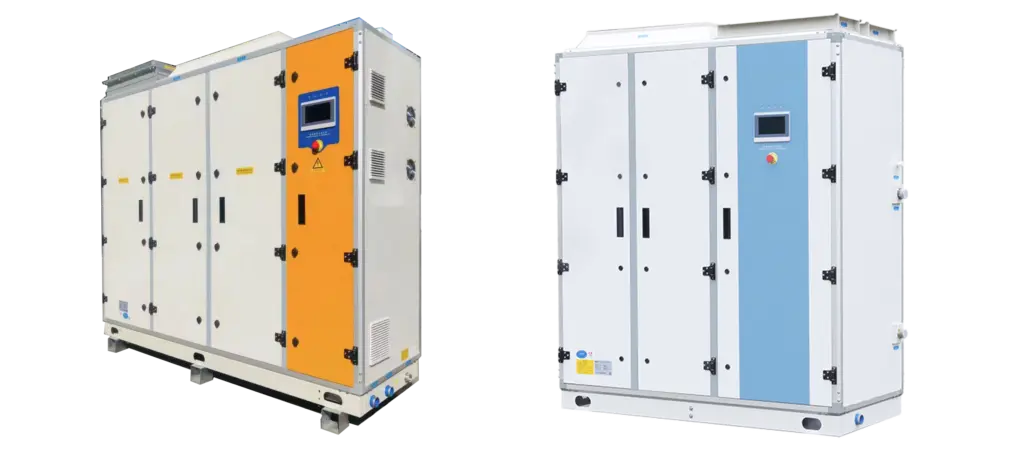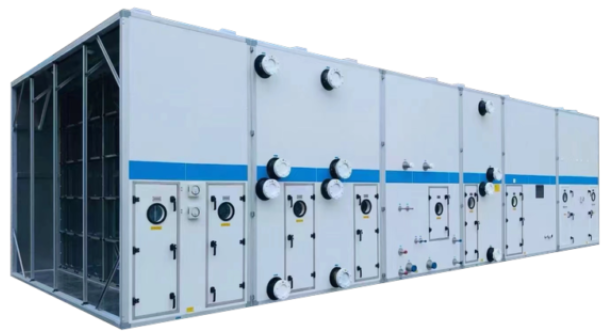The HVAC (Heating, Ventilation, and Air Conditioning) system significantly contributes to energy consumption in modern buildings. Therefore, optimizing its energy efficiency is crucial for reducing operational costs and advancing toward carbon neutrality.
With the escalating global energy crisis and mounting environmental challenges, energy conservation and emission reduction in the construction sector have gained growing prominence. HVAC systems are responsible for 30% to 50% of energy consumption in buildings, making improvements in their energy efficiency critical for reducing operational costs and mitigating environmental impact.
The Problem: Why Are HVAC Systems So Inefficient?
Many systems suffer from legacy issues that hamper their performance:
1.Oversized Design: Many systems are “a sledgehammer to crack a nut,” meaning they were designed for peak loads that rarely occur, leading to inefficient, short-cycling operation.
2.Reactive Maintenance: Clogged filters, refrigerant leaks, and worn parts go unnoticed, causing system performance to degrade steadily over time.
3.Dumb Controls: Most traditional systems rely on fixed setpoints. They can’t adapt to changing occupancy, weather, or internal heat gains, resulting in constant energy waste.

The Solution: Key Technologies to Upgrade HVAC
Here are the most effective technologies to overcome these challenges and boost HVAC efficiency.
| Technology | Core Principle | Best For | Energy Saving Benefit |
| Renewable Integration | Use stable ground temperatures or solar energy for heating / cooling. | Buildings with suitable land / sun access and year – round climate needs. | 30-60% savings with ground source heat pumps. |
| Energy Storage | Make ice or cold water at night (low rates) to cool the building by day. | Buildings with high peak-demand charges and concentrated cooling loads. | Up to 37% reduction in operating costs. |
| Variable Frequency Drives (VFDs) | Precisely adjust motor speed of fans/pumps to match real-time demand. | Any building with fluctuating occupancy and weather conditions. | 30-50% average savings on motor energy. |
| Heat Recovery | Capture energy from exhaust air to pre-condition incoming fresh air. | Hospitals, labs, and buildings with high fresh air requirements. | 20-30% eduction in fresh air handling energy. |
Let’s dive deeper into a few of these game-changers:
1. Renewable Energy Integration
Ground-Source Heat Pumps (GSHP): These systems use the earth’s relatively constant temperature as a heat source in winter and a heat sink in summer. They are incredibly efficient, often achieving a Coefficient of Performance (COP) of 4.0 or higher, meaning they move 4 units of heat for every 1 unit of electricity used.
Solar-Assisted HVAC: Solar photovoltaic (PV) panels can power the system’s compressors and fans, while solar thermal collectors can provide hot water or even drive absorption chillers.
2. Smart Controls & Variable Frequency Drives (VFDs)
VFDs are the core of a modern HVAC system. Instead of fans and pumps running at 100% until a thermostat is satisfied and then shutting off (a very inefficient process), VFDs allow them to slow down or speed up. This “soft” control matches output to the exact load, saving massive amounts of energy. When integrated with an IoT platform, the system can even use weather forecasts and historical data to predictively adjust settings for maximum efficiency.
3. Heat Recovery Ventilation (HRV/ERV)
Why throw away perfectly good energy? In winter, the warm air exhausting can be used to heat the cold fresh air coming in. In summer, the cool exhaust air can pre-cool the warm, humid incoming air. This technology uses specialized heat exchangers to transfer energy, dramatically reducing the load on heating and cooling equipment.

Roadmap to a Successful HVAC Upgrade
A successful energy efficiency project is a journey, not a single event.
Step 1: Conduct a Precise Energy Audit. Don’t guess—measure. Use professional submetering to track the system’s performance over a full operating cycle. This data is the foundation for all effective upgrades.
Step 2: Prioritize and Phase Investment. A phased approach allows you to focus on high-impact measures first. Start with those offering the quickest payback, such as VFDs and control optimization
Step 3: Don’t Skip Commissioning & Continuous Monitoring. After installation, ensure all components work together as designed through rigorous commissioning. Then, establish ongoing monitoring to track performance, catch issues early, and identify new savings opportunities

The Future of HVAC is Intelligent and Integrated
The next wave of innovation is already here, moving beyond simple efficiency to total building integration:
AI and Big Data: Machine learning algorithms can analyze vast operational datasets to uncover hidden inefficiencies and create “self-optimizing” systems.
Grid-Interactive Buildings: Future HVAC systems will communicate with the smart grid, automatically adjusting their load during peak demand events to earn utility incentives.
Full-Lifecycle Carbon Management: The focus will expand from just operational energy to the total carbon footprint, including the embodied carbon in materials and the impact of refrigerants.
In conclusion, Optimizing HVAC system is a powerful investment that pays dividends through lower operating costs, a reduced carbon footprint, and a more comfortable, intelligent indoor environment.




